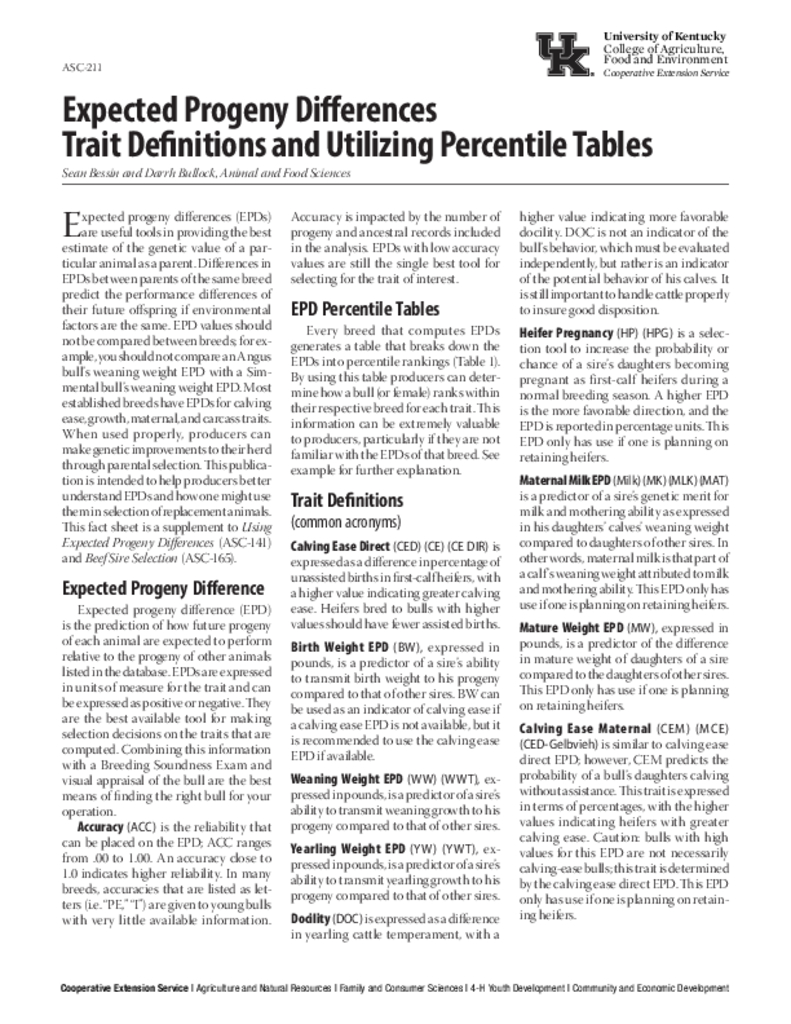Expected Progeny Differences: Trait Definitions and Utilizing Percentile Tables
Expected Progeny Differences: Trait Definitions and Utilizing Percentile Tables
Abstract
Expected progeny differences (EPDs) are useful tools in providing the best estimate of the genetic value of a particular animal as a parent. Differences in EPDs between parents of the same breed predict the performance differences of their future offspring if environmental factors are the same. EPD values should not be compared between breeds; for example, you should not compare an Angus bull's weaning weight EPD with a Simmental bull's weaning weight EPD. Most established breeds have EPDs for calving ease, growth, maternal, and carcass traits. When used properly, producers can make genetic improvements to their herd through parental selection. This publication is intended to help producers better understand EPDs and how one might use them in selection of replacement animals.
Core Details
Publication Date
February 7, 2014
Categorical Details
© 2025 University of Kentucky, Martin-Gatton College of Agriculture, Food and Environment

